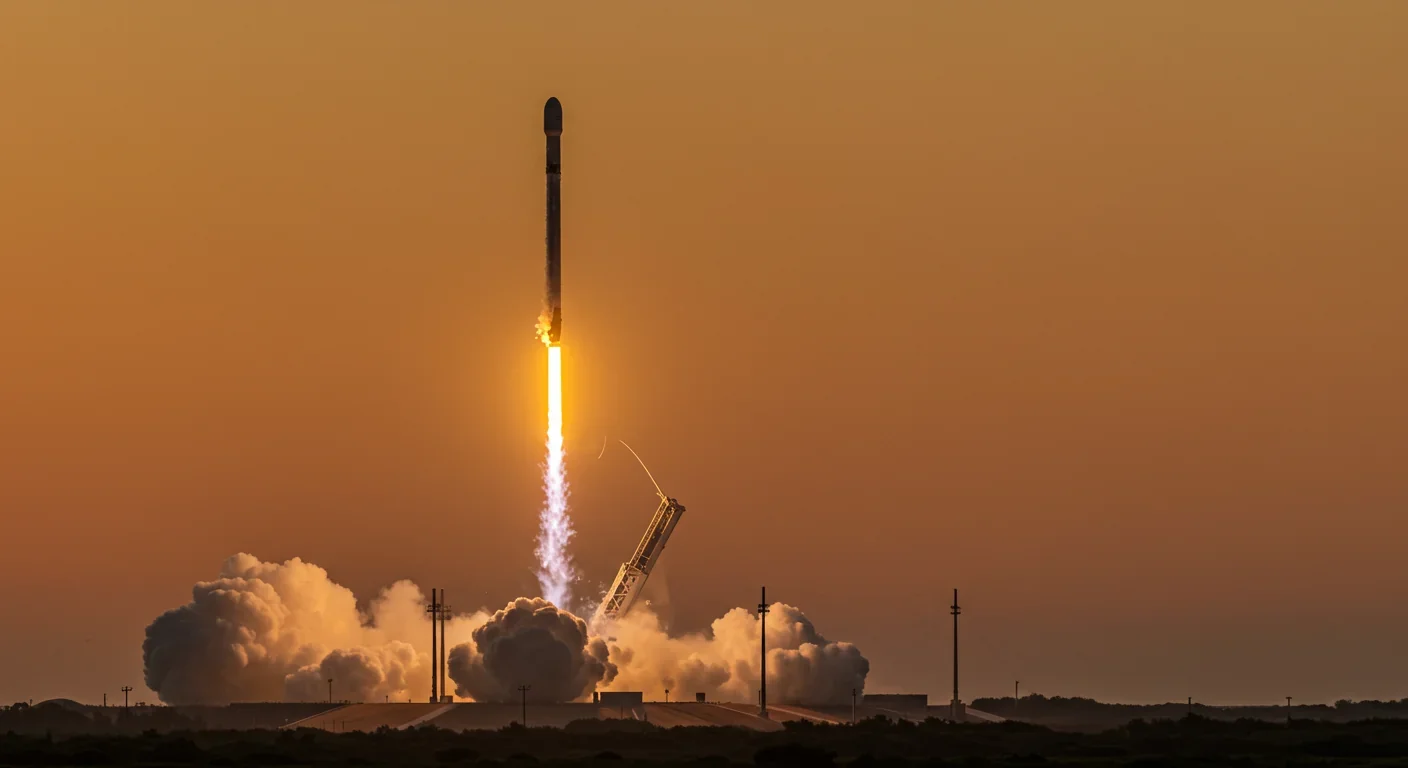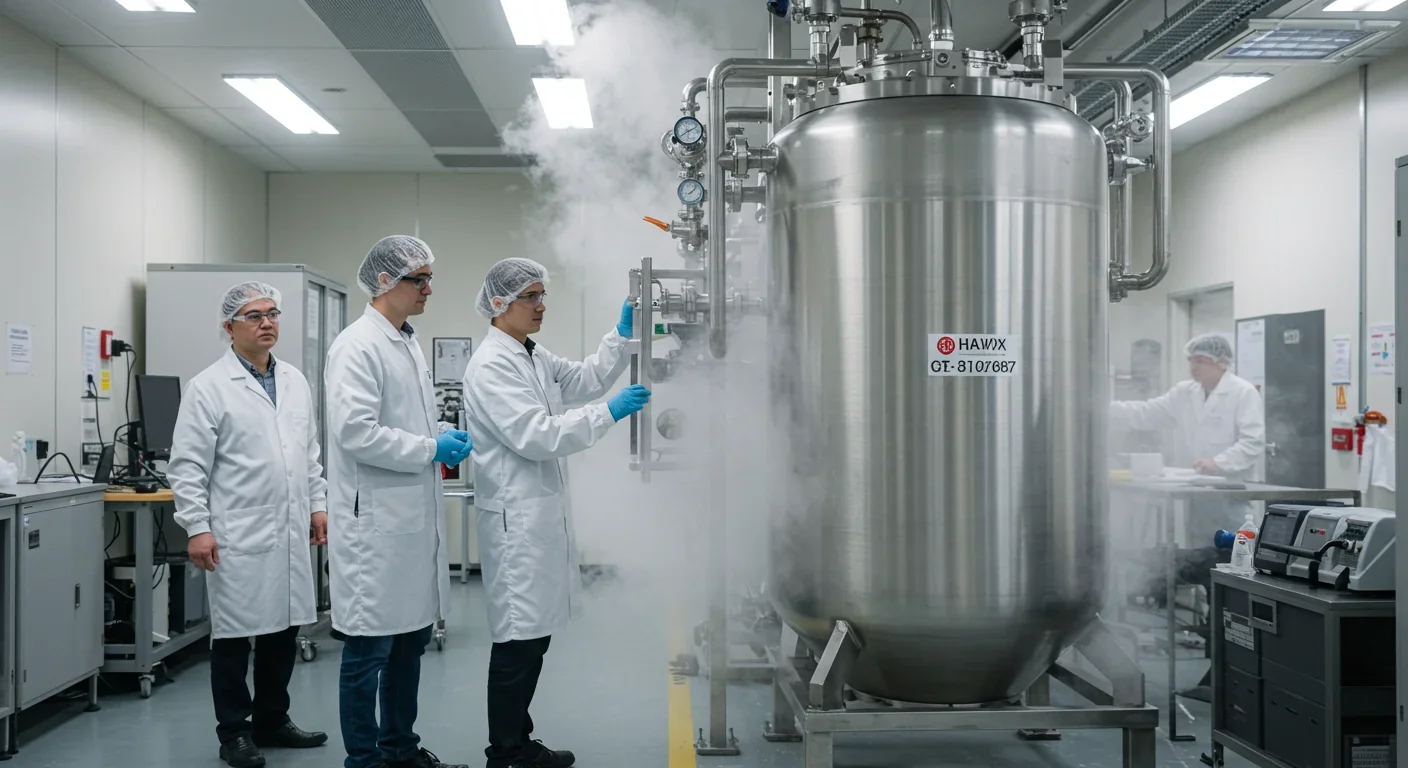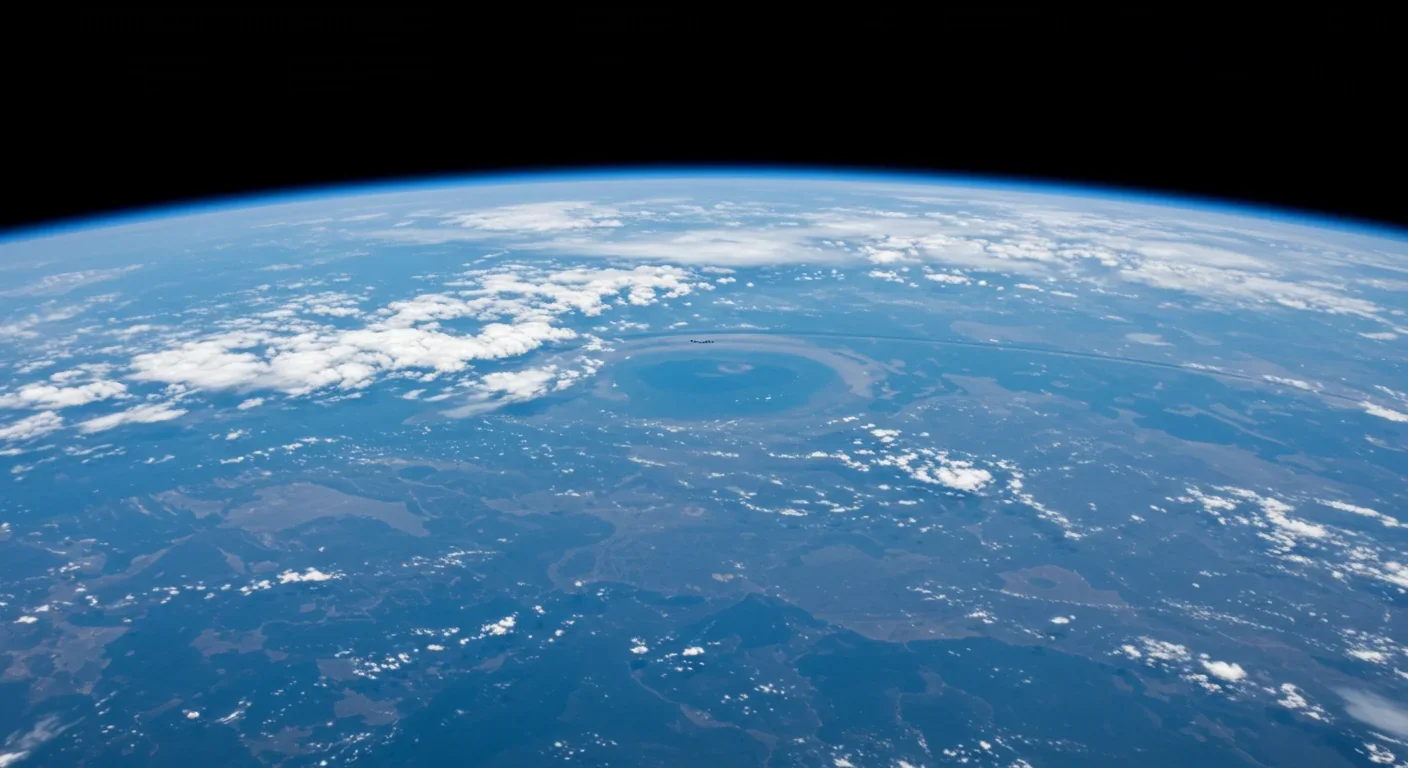Digital Pollution Tax: Can It Save Data Centers?

TL;DR: Space tourism threatens Earth's ozone layer and fills orbit with debris, but sustainable solutions like reusable rockets, hydrogen fuel, and green propellants could make it the first truly eco-friendly frontier industry if we demand environmental responsibility now.

The rocket roared skyward, piercing the blue New Mexico sky with a trail of white exhaust. Inside, six paying customers pressed against their windows, phones out, capturing the moment Earth's curve became visible. That ten-minute trip cost each of them $250,000, and it also cost something else—something we're only beginning to understand.
By 2034, the space tourism industry is projected to launch hundreds of flights annually, turning what was once the exclusive domain of astronauts into an experience accessible to wealthy adventure-seekers. But here's the paradox: the very industry promising to inspire environmental awareness by showing us our fragile blue marble from space might be damaging the planet faster than we realize. And yet, buried within this problem lies a solution so elegant it could revolutionize not just space travel, but how we approach sustainability on Earth.
When you picture a rocket launch, you probably imagine fire, smoke, and raw power. What you don't see is what happens in the stratosphere, miles above the visible plume. Rocket exhaust doesn't just disappear—it accumulates.
Scientists at USC and University College London ran the numbers on an "ambitious launch scenario" where space tourism really takes off. Their findings? Black carbon from rocket launches could trigger a 1.5% reduction in upper-stratospheric ozone. That might sound trivial until you remember that this is the same ozone layer that took decades of global cooperation to repair after CFCs nearly destroyed it.
We spent thirty years recovering from aerosol spray cans. Now we're launching billionaires into space using propellants that deposit aluminum oxide particles directly into the ozone layer's most vulnerable regions. The irony is almost poetic—except there's nothing poetic about increased UV radiation reaching Earth's surface.
But the atmosphere isn't the only victim. Right now, more than 36,000 pieces of debris larger than 10 centimeters orbit Earth, according to Britannica's space debris tracker. Each launch adds to this cosmic junkyard, and space tourism companies are launching more frequently than ever. SpaceX alone conducted over 90 launches in a single year—a pace that was unthinkable a decade ago.
Every scrap of metal circling overhead represents a potential collision, and collisions create exponentially more debris. Scientists call this nightmare scenario Kessler Syndrome: a chain reaction of collisions that could make entire orbital regions unusable for generations. We're literally surrounding ourselves with a wall of our own garbage.
This isn't our first rodeo with environmental destruction. When Europeans settled North America, passenger pigeons numbered in the billions, their flocks so dense they blocked out the sun for hours. Within a century, we'd hunted them to extinction. When we industrialized, we dumped toxic waste into rivers without a second thought, turning waterways into chemical nightmares.
The pattern repeats: discover something new, exploit it recklessly, realize too late what we've destroyed. The ozone hole over Antarctica taught us this lesson in the 1980s. Scientists sounded the alarm, the world actually listened, and the Montreal Protocol became one of the most successful environmental treaties in history.
But here's what's different about space: we can see the disaster coming before it happens. We have the data, the technology, and—for the first time—companies with both the resources and motivation to actually fix it.
Blue Origin's New Shepard rocket uses liquid oxygen and hydrogen as propellants. When those chemicals combust, they produce water vapor. That's it. No carbon dioxide, no toxic residues, just H₂O that returns to Earth's water cycle. Compare that to traditional kerosene-based fuels that leave a trail of soot and carbon through the atmosphere.
The European Space Agency is testing the Themis reusable rocket, designed to land vertically like SpaceX's Falcon 9. Each successful landing means one less booster built, which means less manufacturing emissions, less raw material extraction, less of everything except successful missions.
SpaceX has elevated reusability to an art form. Their Falcon 9 boosters have landed successfully over 200 times. Some individual boosters have flown fifteen missions or more. Think about what that means for a moment—a single piece of hardware worth tens of millions of dollars, working reliably enough to fly over a dozen times. That's not just impressive engineering; it's a fundamental shift in how we approach spaceflight economics.
Meanwhile, companies like ECAPS are developing green propellants based on ammonium dinitramide that offer better performance than traditional hydrazine while being significantly less toxic. The military and commercial satellite operators are already adopting these fuels, proving they work in real-world conditions.
Space Perspective has taken an entirely different approach: pressurized balloons that drift to the edge of space using renewable hydrogen. Zero rocket fuel, zero emissions, just a gentle ascent powered by lighter-than-air technology humans have used for centuries. Passengers get six hours to sip cocktails and watch Earth rotate below them—a far cry from the violent ten-minute thrill ride of a rocket launch, but with none of the environmental guilt.

Here's where it gets interesting. The innovations driven by space tourism's environmental challenges aren't staying in space—they're coming back to Earth in unexpected ways.
Hydrogen fuel cells, perfected for space applications, are now powering buses in Tokyo and trains in Germany. The carbon fiber composites that make reusable rockets light enough to land are making wind turbine blades more efficient. Materials science breakthroughs that reduce rocket weight are showing up in electric vehicle batteries.
But the real transformation runs deeper. Space tourism is creating a new class of environmental advocates—people who've actually seen Earth from space. The "overview effect" isn't just astronaut poetry anymore. When hundreds of people per year experience firsthand how thin our atmosphere really is, how fragile the blue line separating life from void, something shifts in how they relate to environmental issues.
These aren't abstract statistics anymore. They're memories seared into consciousness at 66 miles altitude, watching the sun paint the atmosphere in layers of impossible blue.
Traditional wisdom says environmental protection costs money. Space tourism is flipping that equation. Reusability isn't just greener—it's dramatically cheaper. SpaceX's cost per launch has dropped by an order of magnitude compared to expendable rockets.
The green propellant market is projected to grow significantly because these fuels reduce handling costs and safety risks, not despite their environmental benefits but because of them. Less toxic propellants mean less expensive safety equipment, simpler storage, faster turnaround times.
This is the holy grail of sustainability: making the right choice also the profitable choice. When environmental responsibility aligns with economic incentives, change happens fast.
Investment is pouring in. The space launch services industry is expected to exceed $50 billion by 2034, with a significant portion dedicated to sustainable technologies. Private equity firms are betting billions that green propulsion and reusable systems will dominate the market.
Space tourism offers something unique: a chance to get sustainability right before we've destroyed what we're trying to protect. We can build this industry with environmental consciousness baked into its foundation rather than bolted on as an afterthought.
The technologies already exist. Hydrogen-oxygen engines produce water. Reusable rockets slash manufacturing waste. Electric propulsion systems eliminate toxic hydrazine. Carbon offset programs allow passengers to fund terrestrial environmental projects. Some companies are even exploring biofuels derived from algae—rocket fuel you can grow in tanks.
Think bigger: every innovation pushed by the demands of sustainable space travel creates tools we can use on Earth. The closed-loop life support systems NASA developed for the International Space Station inspired breakthroughs in water recycling now used in drought-stricken regions. Solar panel efficiency improvements driven by spacecraft needs make rooftop installations more viable.
We're essentially using space tourism as a forcing function for environmental innovation. The extreme demands of spaceflight—every kilogram matters, every chemical reaction is scrutinized—create an environment where sustainable solutions aren't optional, they're essential.
But let's be clear-eyed about the risks. Even with green propellants and reusable boosters, scaling space tourism to thousands of annual flights will have consequences. The stratosphere isn't designed to handle that much traffic.
A 2025 study in Science Daily warned that rapid rocket growth poses serious threats to Earth's fragile ozone layer, particularly if launches continue at projected rates without stricter environmental controls. Water vapor from hydrogen engines might be cleaner than kerosene soot, but it still alters atmospheric chemistry at sensitive altitudes.
The debris problem gets worse before it gets better. Even perfectly executed launches leave microparticles—flakes of paint, metal dust, spent stages. At orbital velocities, a paint chip hits with the force of a bullet. The more we launch, the more dangerous the orbital environment becomes, creating a potential barrier to future space access.
There's also an equity issue. Space tourism, even with falling prices, remains accessible only to the wealthy. We're asking everyone to accept atmospheric risks so billionaires can check an item off their bucket list. That's a tough sell, particularly in developing nations that will bear the brunt of any ozone depletion consequences through increased UV exposure.
And regulatory frameworks are struggling to keep pace. International space law was written in the 1960s for government programs, not commercial tourism. Who's responsible when a debris collision damages another country's satellite? How do we enforce emissions standards in space? The Brookings Institution notes that governance structures simply haven't caught up to commercial space reality.

Different nations are approaching space tourism's environmental challenges differently, and those approaches reveal deeper philosophical divides about technology and sustainability.
Europe's space program has made environmental sustainability a core design requirement, not an afterthought. The Themis project incorporates life-cycle environmental assessments from initial concept through retirement. European regulators are pushing for mandatory environmental impact studies before approving launches.
Meanwhile, the United States has taken a more market-driven approach, betting that competition will naturally reward companies that find cheaper, cleaner solutions. SpaceX's success with reusability seems to validate this philosophy—Elon Musk didn't land boosters to save the planet, he did it to cut costs, but the environmental benefits came along for the ride.
China's space program operates under different constraints entirely, prioritizing national prestige and technological independence over environmental concerns. Their rapidly expanding launch capacity operates largely outside international environmental frameworks, creating a potential race to the bottom if other nations feel pressured to relax standards to remain competitive.
Emerging space nations like India and the UAE are incorporating sustainability from the start, learning from others' mistakes. They have the advantage of building new infrastructure rather than retrofitting old systems, and they're leveraging green technologies as a competitive advantage.
This fragmentation poses challenges. Space doesn't respect borders. Emissions from Chinese rockets affect the same ozone layer protecting European citizens. Debris from American satellites threatens Indian spacecraft. We need global cooperation, but achieving it requires navigating vastly different economic realities and political systems.
So where does this leave us as individuals watching this unfold? What can ordinary people do while billionaires battle over orbital lanes?
First, understand that space tourism's environmental impact isn't predetermined—it's being decided right now through thousands of engineering decisions, regulatory choices, and market pressures. Your voice matters. Support companies prioritizing sustainability. Demand transparency about emissions and debris mitigation from space tourism operators.
Second, recognize that the skills required for a sustainable space economy are teachable and learnable today. Environmental engineers, materials scientists, policy experts, systems designers—these roles will be crucial in shaping how humanity expands beyond Earth. Universities are adding courses on space sustainability, and many careers that seem Earth-bound today will have space applications tomorrow.
Third, stay curious and critical. When a company claims carbon-neutral launches, dig into the details. Are they using genuine offsets or greenwashing? When regulators propose new space environmental standards, understand what they actually require versus what sounds good in press releases.
The overview effect works both ways. Just as seeing Earth from space changes perspectives on planetary fragility, understanding space tourism's challenges can reshape how we think about sustainability everywhere. The closed-loop thinking required for sustainable spaceflight—every resource precious, every waste stream a problem—applies equally to terrestrial systems.
Space tourism forces a confrontation with a fundamental truth: we can't keep treating frontiers as dumping grounds. Whether that frontier is a forest, an ocean, or low Earth orbit, the pattern of exploitation and belated regret has to end.
The technology exists to make space tourism sustainable. Green propellants work. Reusable rockets fly reliably. Carbon offsets, while imperfect, can bridge gaps during transition periods. Debris mitigation protocols can prevent cascading collisions if enforced.
What's missing isn't capability—it's will. Do we have the collective determination to demand that this new industry builds itself differently from the start? Can we resist the gravitational pull of short-term profits and expedience?
The space tourism industry stands at a crossroads. One path leads to an orbital junkyard and a degraded ozone layer, the visible price of letting innovation outpace responsibility. The other path—harder, requiring cooperation across borders and bottom lines—leads to an industry that proves humanity can expand beyond Earth without destroying the planet that birthed us.
Fifty years from now, we'll look back on this decade as when space tourism either became humanity's latest environmental disaster or our first truly sustainable frontier industry. The rocket exhaust trails crisscrossing our skies right now are writing the first draft of that history.
Which ending we get isn't determined by technology or economics—those pieces are already in place. It's determined by what we demand, what we accept, and whether we finally learn the lesson every frontier has tried to teach us: there's nowhere left to run when we've fouled our own nest. Even space, vast as it is, isn't big enough to outrun our mistakes.
The good news? We already know how to do this right. We just have to choose to.

Recent breakthroughs in fusion technology—including 351,000-gauss magnetic fields, AI-driven plasma diagnostics, and net energy gain at the National Ignition Facility—are transforming fusion propulsion from science fiction to engineering frontier. Scientists now have a realistic pathway to accelerate spacecraft to 10% of light speed, enabling a 43-year journey to Alpha Centauri. While challenges remain in miniaturization, neutron management, and sustained operation, the physics barriers have ...

Epigenetic clocks measure DNA methylation patterns to calculate biological age, which predicts disease risk up to 30 years before symptoms appear. Landmark studies show that accelerated epigenetic aging forecasts cardiovascular disease, diabetes, and neurodegeneration with remarkable accuracy. Lifestyle interventions—Mediterranean diet, structured exercise, quality sleep, stress management—can measurably reverse biological aging, reducing epigenetic age by 1-2 years within months. Commercial ...

Data centers consumed 415 terawatt-hours of electricity in 2024 and will nearly double that by 2030, driven by AI's insatiable energy appetite. Despite tech giants' renewable pledges, actual emissions are up to 662% higher than reported due to accounting loopholes. A digital pollution tax—similar to Europe's carbon border tariff—could finally force the industry to invest in efficiency technologies like liquid cooling, waste heat recovery, and time-matched renewable power, transforming volunta...

Humans are hardwired to see invisible agents—gods, ghosts, conspiracies—thanks to the Hyperactive Agency Detection Device (HADD), an evolutionary survival mechanism that favored false alarms over fatal misses. This cognitive bias, rooted in brain regions like the temporoparietal junction and medial prefrontal cortex, generates religious beliefs, animistic worldviews, and conspiracy theories across all cultures. Understanding HADD doesn't eliminate belief, but it helps us recognize when our pa...

The bombardier beetle has perfected a chemical defense system that human engineers are still trying to replicate: a two-chamber micro-combustion engine that mixes hydroquinone and hydrogen peroxide to create explosive 100°C sprays at up to 500 pulses per second, aimed with 270-degree precision. This tiny insect's biochemical marvel is inspiring revolutionary technologies in aerospace propulsion, pharmaceutical delivery, and fire suppression. By 2030, beetle-inspired systems could position sat...

The U.S. faces a catastrophic care worker shortage driven by poverty-level wages, overwhelming burnout, and systemic undervaluation. With 99% of nursing homes hiring and 9.7 million openings projected by 2034, the crisis threatens patient safety, family stability, and economic productivity. Evidence-based solutions—wage reforms, streamlined training, technology integration, and policy enforcement—exist and work, but require sustained political will and cultural recognition that caregiving is ...

Every major AI model was trained on copyrighted text scraped without permission, triggering billion-dollar lawsuits and forcing a reckoning between innovation and creator rights. The future depends on finding balance between transformative AI development and fair compensation for the people whose work fuels it.